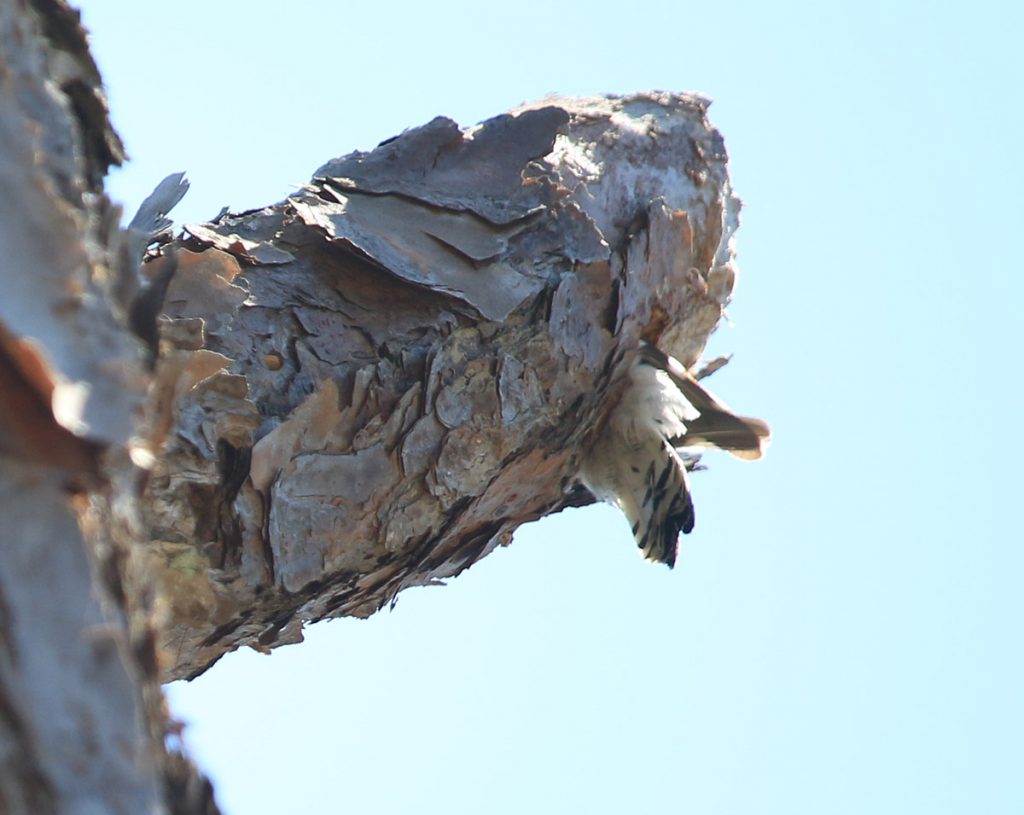Here’s a Florida habitat outside of the WFSU viewing area. We were visiting my father-in-law in Tampa about a week before Covid shut a lot of things down. This was a nice little surprise on the way to to the kids’ first Disney trip- a virgin slash pine forest full of nesting ospreys, great horned owls, and bald eagles.
Honeymoon Island is four miles long. Facing the Gulf of Mexico are beaches and dunes, a nesting habitat for shorebirds. Behind the dunes are old growth, fire dependent slash pines. Some of the trees here are almost 200 years old, which is old for slash pine (longleaf can reach 500). We saw very little of the beach, opting for a hike along Osprey Trail.
It doesn’t take long to crack the the trail’s name:
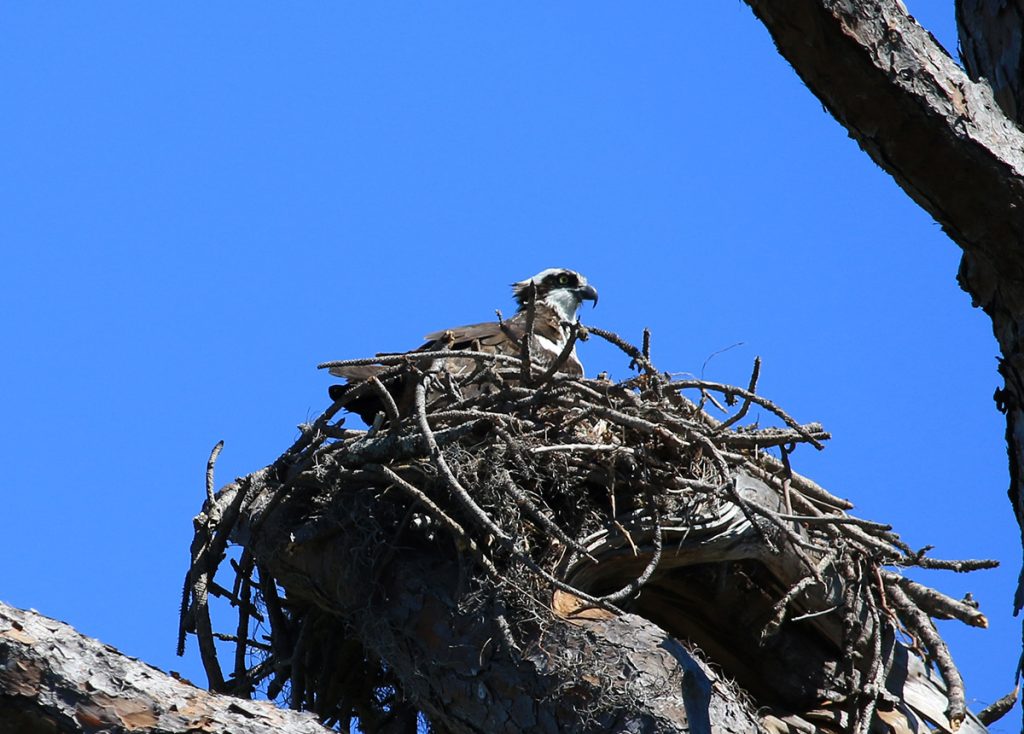
It just happened to be nesting season for the raptor species on the island. On the short section of the trail loop we walked, we saw numerous osprey nests, and ospreys enjoying a recent catch.
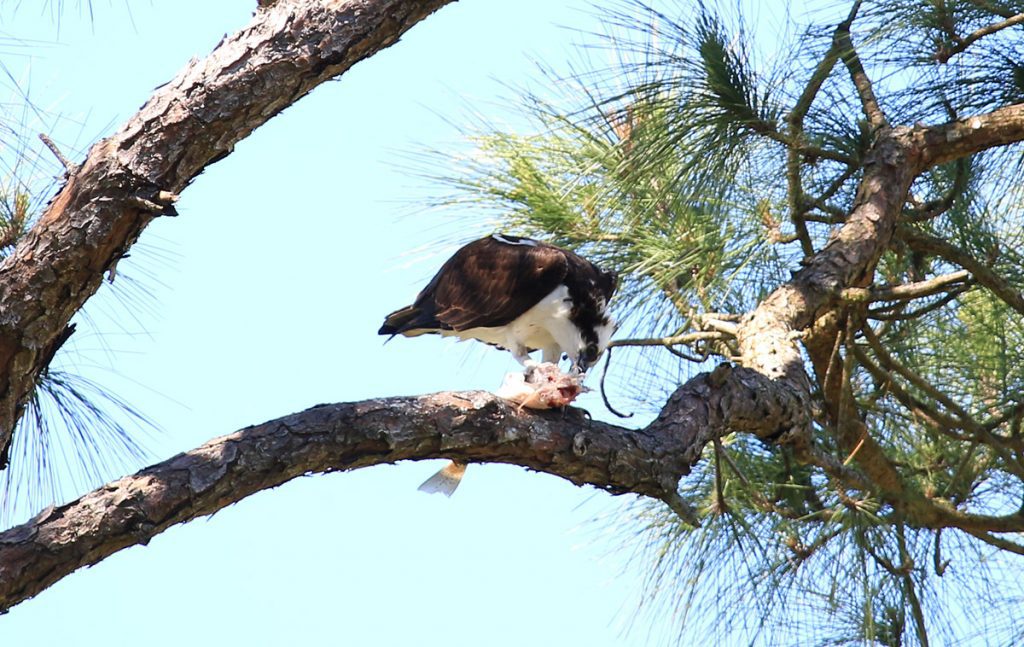
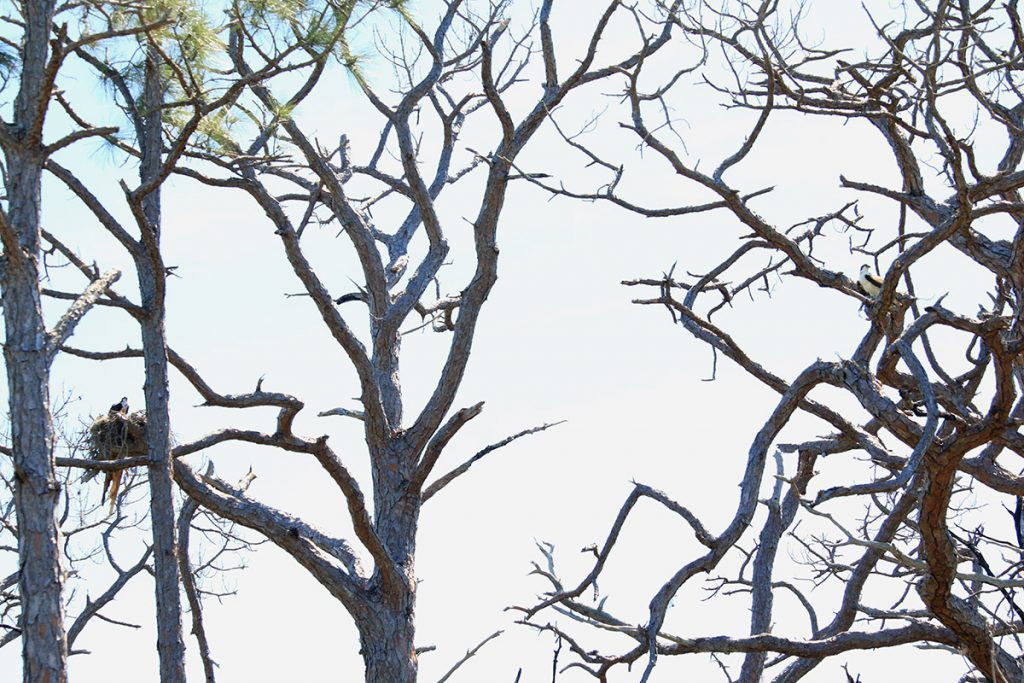
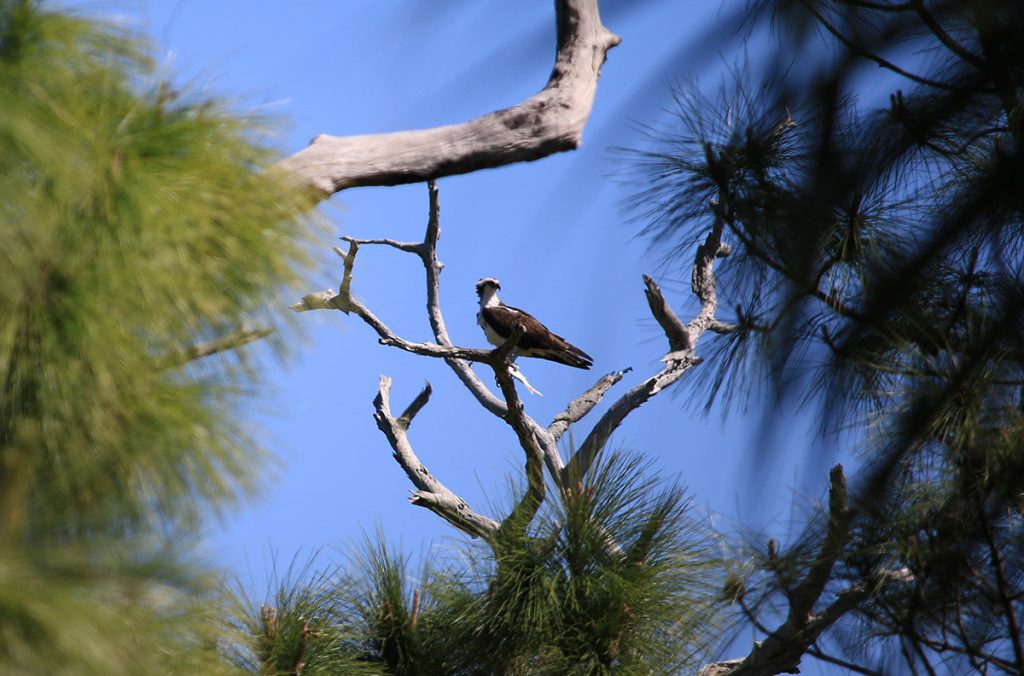
Great Horned Owl Nest
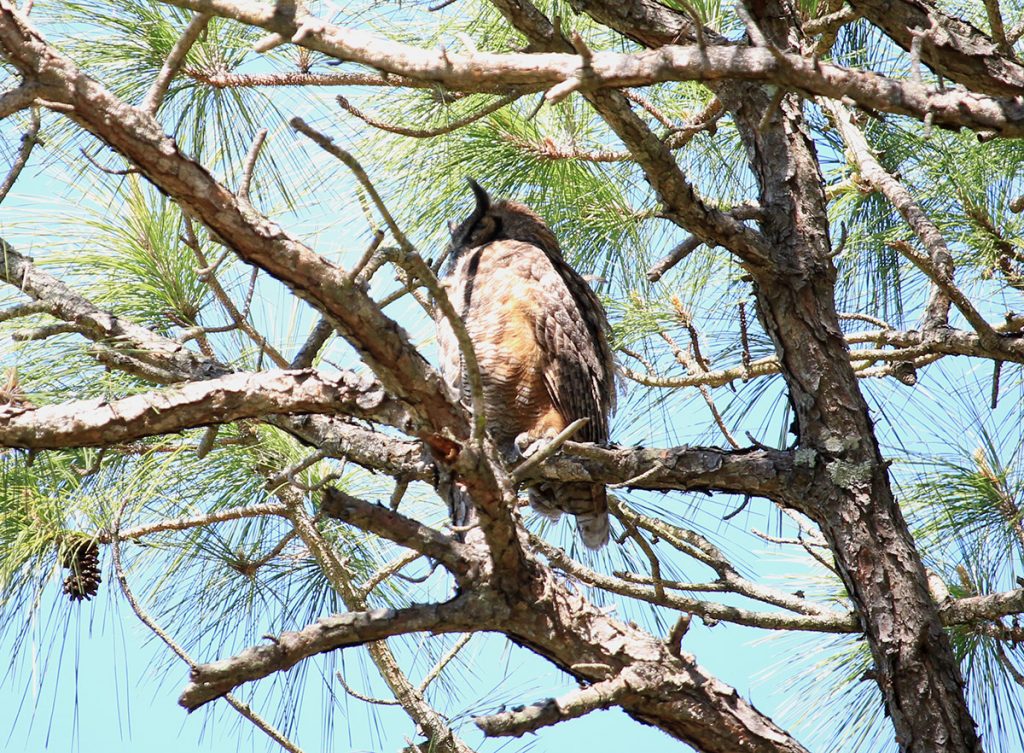
I spent some time under this owl, which didn’t look awake most of the time. Every once in a while, though, she looked over towards this nest:
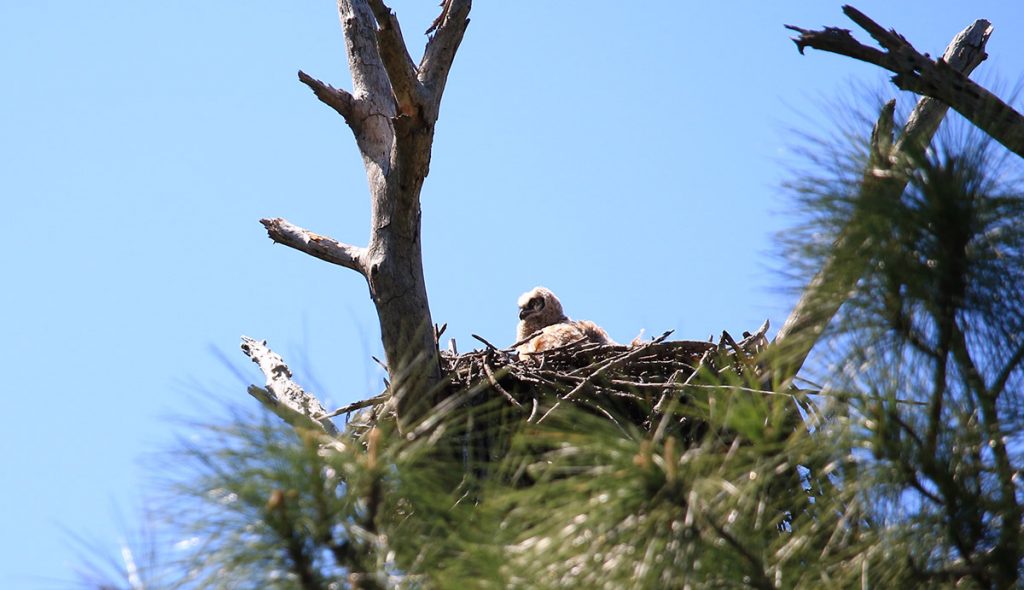
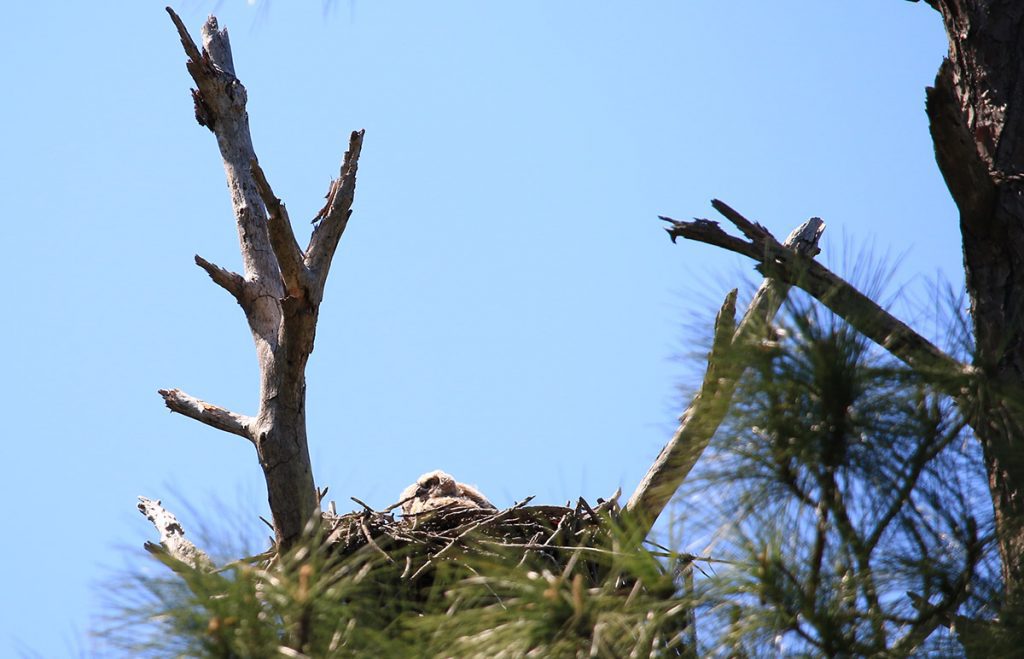
There were more than one in there, but only one kept its head up long enough for a photo.
Bald Eagle Nest
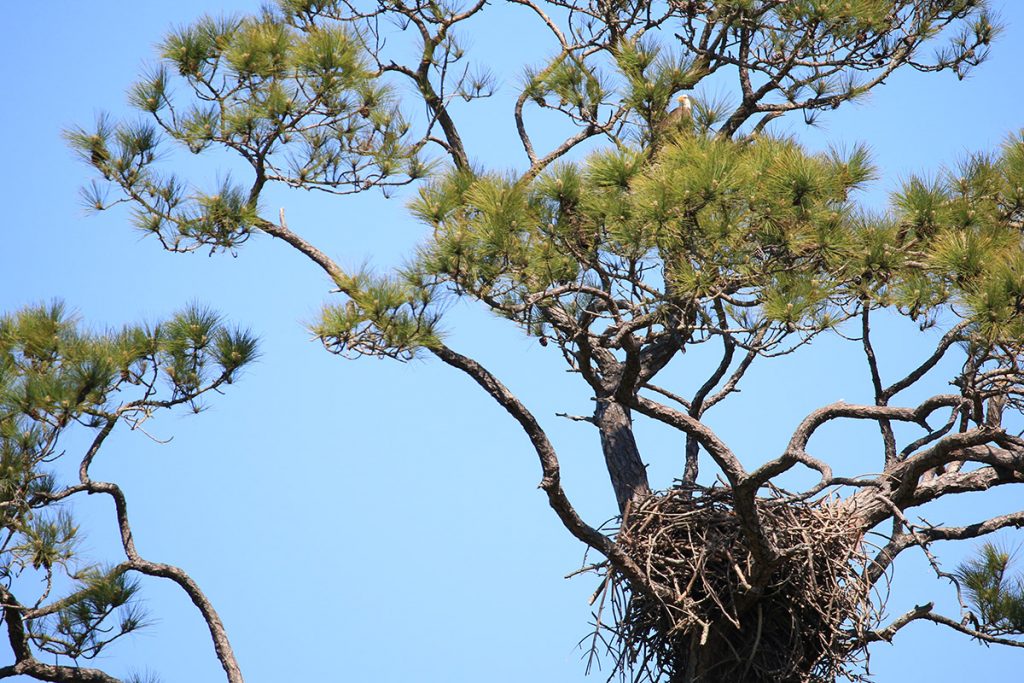
I don’t have much of a photo here. These eagles became more obscured by the tree and nest as you walked closer to them. I have a further away shot where you can see both eagles, but I feel like in this one you can really see the size of the nest. Seeing an eagle’s nest in person is awe inspiring- the things are huge.
We may not have seen the young eagle in the nest on this day, but one week later, I did get to see one on the shores of St. Vincent Island.
Downy Woodpecker Nesting?
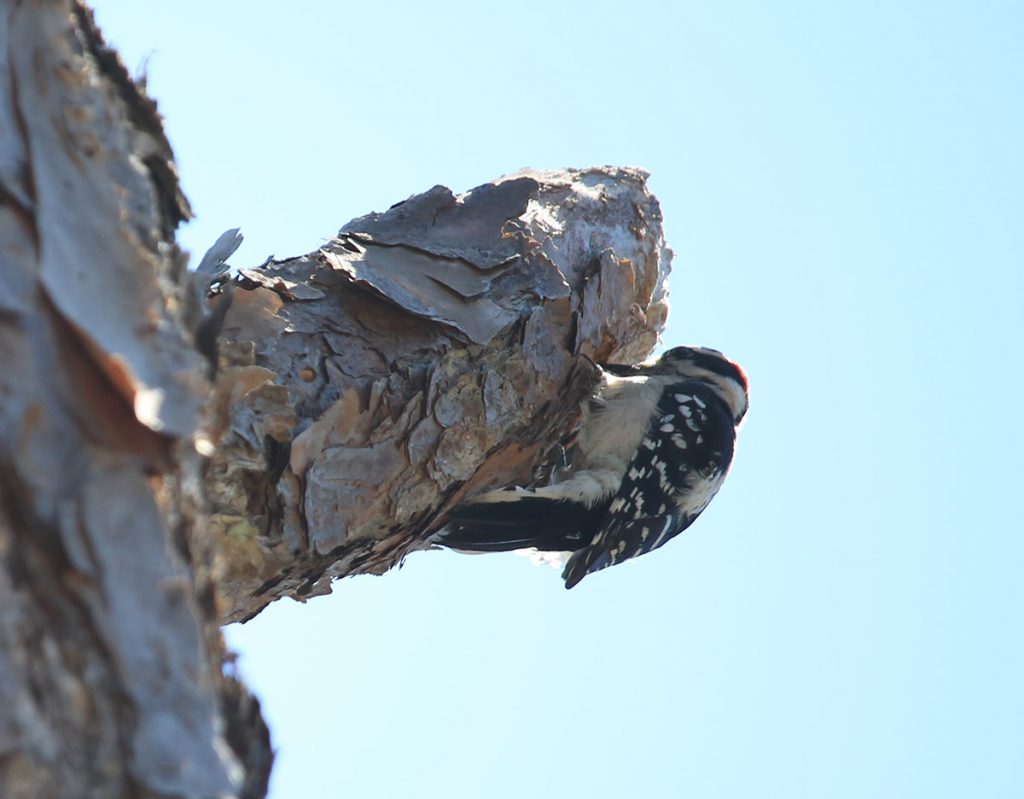
Not a raptor, but who doesn’t like a woodpecker? Publishing this two years later, I can’t say I remember if this was a dead or living tree. Downy woodpeckers, all woodpeckers aside from red cockaded woodpeckers, make their nests in dead wood. At the very least, right where this branch has broken off there seems to be some dead wood for the woodpecker to work on a nesting cavity:
